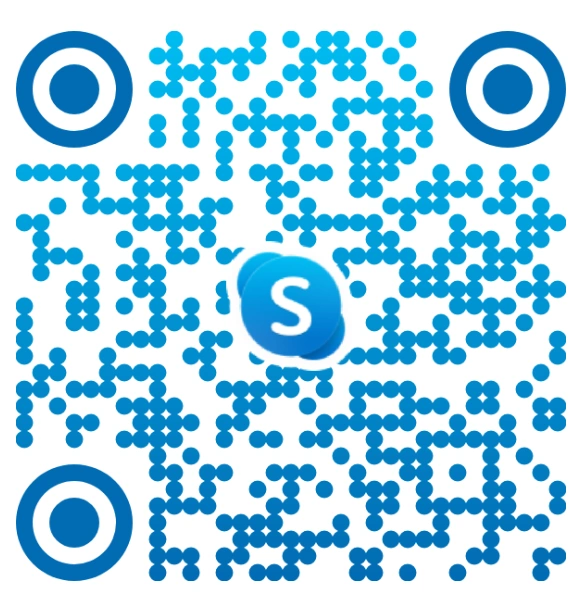Empowering Enterprise AI with Knowledge Graph-Guided Retrieval-Augmented Generation
Introduction
Enterprise AI is undergoing a major shift. While traditional AI systems have helped automate repetitive tasks and accelerate decision-making, they often fall short when it comes to delivering deep, contextual understanding across large, unstructured enterprise data ecosystems. This is where Retrieval-Augmented Generation (RAG), especially when combined with knowledge graphs, emerges as a game changer.
As businesses seek AI solutions that are not only powerful but also accurate, explainable, and compliant, the integration of Knowledge Graph-Guided RAG is proving vital. This synergy bridges the gap between raw data and intelligent insights, enhancing how enterprises retrieve, process, and generate content. In this blog, we’ll walk through the fundamentals, benefits, implementation steps of RAG with a knowledge graph, and how it transforms enterprise AI efficiency.
What is Retrieval-Augmented Generation (RAG)?
RAG in AI is a method that enhances Large Language Models (LLMs) by combining their generative capabilities with a document retrieval system. Instead of relying solely on the pre-trained knowledge of a language model, RAG AI tools actively fetch relevant data from a designated source and use it to generate accurate, updated responses, making them a practical foundation for building scalable generative AI solutions in enterprise environments.
Here’s how the RAG process works:
- Retriever fetches the most relevant data from a knowledge source (e.g., a database or document index).
- Generator (LLM) uses that information to produce a human-like, context-aware answer.
This process ensures that the AI doesn’t hallucinate information, especially in enterprise contexts where precision is critical. It represents a new generation of AI RAG models that are far more reliable and dynamic than traditional LLMs.
What Are Knowledge Graphs and Why Do They Matter?
A knowledge graph is a structured representation of information that connects entities through defined relationships. Think of it as a semantic network where data isn’t just stored, it’s understood.
For example, in an enterprise setting, a knowledge graph can link employees, projects, clients, policies, and documents, creating a rich map of interrelated data points.
Incorporating knowledge graphs in AI applications enhances contextual understanding, allows for more accurate queries, and improves explainability. When applied to RAG architecture, it leads to Graph-Based RAG Models that are more robust, trustworthy, and adaptable.
Also Read : Chain-of-RAG: Building Multi-Step AI Systems for Complex Business Solutions
The Need for Knowledge Graph-Guided RAG in Enterprises
Enterprises today deal with vast amounts of unstructured data, emails, documents, chats, logs, and reports. This data is difficult to process using standard LLMs, which often produce:
- Inaccurate or hallucinated outputs
- Inconsistent compliance
- Low explainability
- Scalability challenges
With Knowledge Graph-Guided RAG, enterprises can address these issues. By introducing structure through knowledge graphs, the AI gains a deeper, more reliable foundation to draw from. This combination not only improves accuracy but also strengthens compliance and traceability, making it a leading RAG solution for enterprise-scale problems.
Key Benefits of Knowledge Graph-Guided RAG for Enterprise AI
Combining RAG AI with knowledge graphs delivers enterprise-grade intelligence that’s accurate, explainable, and resilient, driving smarter AI-powered automation across industries. Below are the core benefits fueling widespread adoption.
1. Higher Accuracy & Contextual Relevance
Unlike standalone LLMs, RAG GPT models powered by knowledge graphs retrieve data that’s both current and relevant. This leads to outputs that align closely with internal enterprise knowledge.
2. Improved Explainability and Compliance
Each response can be traced back to the source node in the graph. This auditability makes Enterprise RAG systems compliant with industry regulations and easier to debug or fine-tune.
3. Lower Hallucination Rates
By grounding responses in verified enterprise data, RAG AI significantly reduces the chances of fabricating information, one of the main concerns with traditional LLMs.
4. Real-Time Adaptability
When paired with continuously updated graphs, RAG technology can adapt in real time. For instance, if a compliance rule changes, the knowledge graph reflects it immediately, influencing future responses.
5. Stronger Knowledge Retention
With structured memory, RAG algorithms retain enterprise knowledge more effectively. This improves long-term learning across domains.
How to Implement Knowledge Graph-Guided RAG in Enterprise AI
Implementing a RAG platform with knowledge graph integration is easier with the right framework, enabling accurate, scalable, and efficient Enterprise AI retrieval and decision-making. Here’s a step-by-step approach:
Step 1: Identify Data Sources
The first step in building a knowledge graph-guided RAG architecture is identifying relevant data sources, both structured and unstructured. These sources serve as the foundation for your knowledge graph and retrieval pipeline.
Typical enterprise data sources may include:
- CRM and ERP systems
- Internal wikis and documentation portals
- Support tickets, emails, and chat logs
- Databases and cloud storage systems
- Regulatory or compliance reports
Carefully mapping and cleaning these data streams is essential to effective AI knowledge graph integration.
Step 2: Connect the Retriever
Once your data is identified and structured, the next step is to implement a retriever capable of fetching relevant content in real time. This retriever should be tightly integrated with your knowledge graph for RAG, text corpus, and aligned with your AI model development strategy to ensure seamless retrieval-to-generation flow.
Best practices for this step include:
- Using semantic or hybrid retrieval models that support graph-based RAG models
- Ensuring compatibility with RAG knowledge graph querying protocols (SPARQL, Cypher, etc.)
- Employing vector databases for efficient similarity search
A well-connected retriever ensures that your RAG AI tools pull the most contextually relevant data every time.
Step 3: Link the LLM
Your retriever must then be linked to a Large Language Model (LLM) that can process the retrieved knowledge and generate human-like, accurate responses. This is where the AI RAG model comes to life.
Key actions in this step:
- Choose an LLM with knowledge graph compatibility (e.g., via API prompt tuning or fine-tuning)
- Use context windows or chaining methods to feed retrieved data directly into the LLM
Ensure the model understands graph relationships for contextual richness
This step ensures that your RAG GPT or custom model doesn’t just generate content; it generates enterprise-aligned, knowledge-grounded responses.
Step 4: Set Up Evaluation
A powerful system is only as good as its output. That’s why implementing a robust evaluation strategy is vital to monitoring the performance of your RAG algorithm.
Recommended evaluation practices:
- Measure output accuracy, latency, and semantic relevance
- Track user interactions and satisfaction rates
- Use metrics like factual consistency, citation accuracy, and confidence scoring
- Include human-in-the-loop reviews for critical workflows
Ongoing performance tracking makes your Enterprise RAG system reliable and auditable.
Step 5: Maintain the Graph
Finally, continuous maintenance of your knowledge graph ensures that your RAG AI model stays relevant and reflects the latest business logic and regulatory context. An outdated graph can degrade response quality and lead to errors.
Maintenance tips:
- Automate graph updates through scheduled data pipelines
- Validate entity relationships regularly
- Ensure schema alignment and semantic consistency
- Monitor ingestion pipelines for accuracy and completeness
Consistent updates ensure long-term success and scalability of your RAG technology for AI enterprise efficiency.
Also Read : Agentic RAG Unlocking Smarter Goal Driven AI Solutions for Your Business
Challenges and How to Overcome Them
While RAG AI paired with knowledge graphs offers powerful advantages, implementing it at scale as part of broader business enterprise solutions comes with technical and operational hurdles. Below are some common challenges enterprises face, and how to address them effectively:
- Incomplete Graphs: Use NLP techniques and auto-tagging to infer missing relationships. Graph completion models can also enrich and expand your existing data structure.
- Data Silos: Facilitate interoperability through well-documented APIs and standardized schemas to promote seamless cross-department data integration.
- Latency: Optimize your RAG architecture for enterprises by caching frequent queries, using high-performance vector databases, and minimizing redundant retrieval operations.
- Scalability: Implement distributed RAG platforms capable of handling real-time, concurrent queries with automatic scaling for dynamic enterprise workloads.
- Evaluation Complexity: Incorporate human-in-the-loop (HITL) evaluations alongside automated testing frameworks to continuously monitor accuracy, traceability, and system performance.
The Future of Enterprise AI with Graph-Enhanced RAG
The next evolution of enterprise AI with knowledge graphs will be shaped by systems that are real-time, adaptive, and increasingly autonomous. As businesses demand more responsive and intelligent platforms, RAG AI technologies will become foundational to enterprise success. Here are key trends to watch:
- Agentic RAG Systems: The rise of custom AI agents that use RAG algorithms to make decisions, initiate tasks, and execute workflows with minimal human input.
- Real-Time Graph Updates: Enterprises will implement continuous data ingestion from APIs, sensors, and enterprise applications, keeping their knowledge graphs for RAG consistently updated and context-aware.
- Co-Training Graphs and LLMs: Instead of simply feeding graphs into models, future systems will train LLMs using graph structures, improving reasoning and factual accuracy.
- Multimodal RAG Integration: Combining text, images, audio, and sensor data within the RAG process, enabling broader enterprise applications.
These innovations will unlock smarter, safer, and more scalable AI knowledge graph integrations, setting the stage for more reliable, domain-specific enterprise applications of RAG.
Why Amplework Is the Right Partner for Enterprise RAG Solutions
At Amplework, we specialize in delivering customized RAG AI solutions that meet the unique demands of modern enterprises. Our team blends deep technical expertise in LLMs with knowledge graphs and extensive experience in AI development services to build intelligent systems that are not only accurate but also scalable, explainable, and compliant. We understand that every enterprise has different goals, so we design RAG workflows that align precisely with your business logic and data architecture.
Our capabilities include building secure and scalable infrastructure, implementing RAG platforms across complex environments, and ensuring seamless AI knowledge graph integration. From healthcare diagnostics and financial reporting to legal document automation, we’ve delivered real-world enterprise RAG solutions that drive measurable results.
Whether you’re in the early stages of exploring RAG in AI or ready to deploy a full-scale RAG architecture for enterprises, Amplework is the trusted partner you need. We help transform advanced technologies like Graph RAG into practical tools that deliver long-term enterprise efficiency.
Also Read : Retrieval-Augmented Generation (RAG) in Agent-Orchestrated Systems
Final Words
Enterprise AI today demands more than just speed; it requires trust, traceability, and deeper understanding. That’s why Knowledge Graph-Guided Retrieval-Augmented Generation is becoming essential. By combining RAG AI with structured data from knowledge graphs, businesses gain context-rich, compliant, and accurate outputs, enabling smarter decisions across enterprise workflows.
Now is the time to invest in future-ready solutions like RAG with knowledge graphs. This powerful approach reduces hallucinations, improves knowledge retention, and increases efficiency. Whether you’re exploring your first RAG platform or scaling existing enterprise AI retrieval systems, the right RAG solution can transform how your organization works with data.
FAQ
What is RAG in AI?
It stands for Retrieval-Augmented Generation, a technique that improves LLMs by integrating real-time retrieved data during response generation.
What’s the difference between RAG and traditional LLMs?
Traditional LLMs generate responses based on training data. RAG GPT uses external data in real time, making responses fresher and more reliable.
What industries benefit most from Graph RAG?
Finance, healthcare, legal, and customer service industries see the greatest impact due to their data sensitivity and compliance needs.
How does RAG improve enterprise efficiency?
It enables faster, more accurate decision-making and reduces manual workload, enhancing enterprise AI performance.
Are there open-source RAG tools available?
Yes, frameworks like Haystack and LangChain support RAG algorithms and can be customized for enterprise use.
What’s the role of LLMs with knowledge graphs?
LLMs interpret retrieved graph data, while graphs structure the underlying knowledge for better insight generation.
How do I get started with RAG for my enterprise?
Begin with a data audit, choose your RAG platform, define your knowledge graph schema, and hire AI developers for a pilot deployment.
How is RAG AI used in financial risk reporting?
A RAG solution can retrieve real-time data from compliance documents, dashboards, and legal sources, generating risk insights that are both accurate and audit-ready.
Can RAG with knowledge graphs improve healthcare diagnostics?
Yes. By linking patient history, symptoms, and clinical guidelines, RAG with a knowledge graph helps healthcare professionals make informed, data-backed diagnostic decisions.


 sales@amplework.com
sales@amplework.com
 (+91) 9636-962-228
(+91) 9636-962-228





